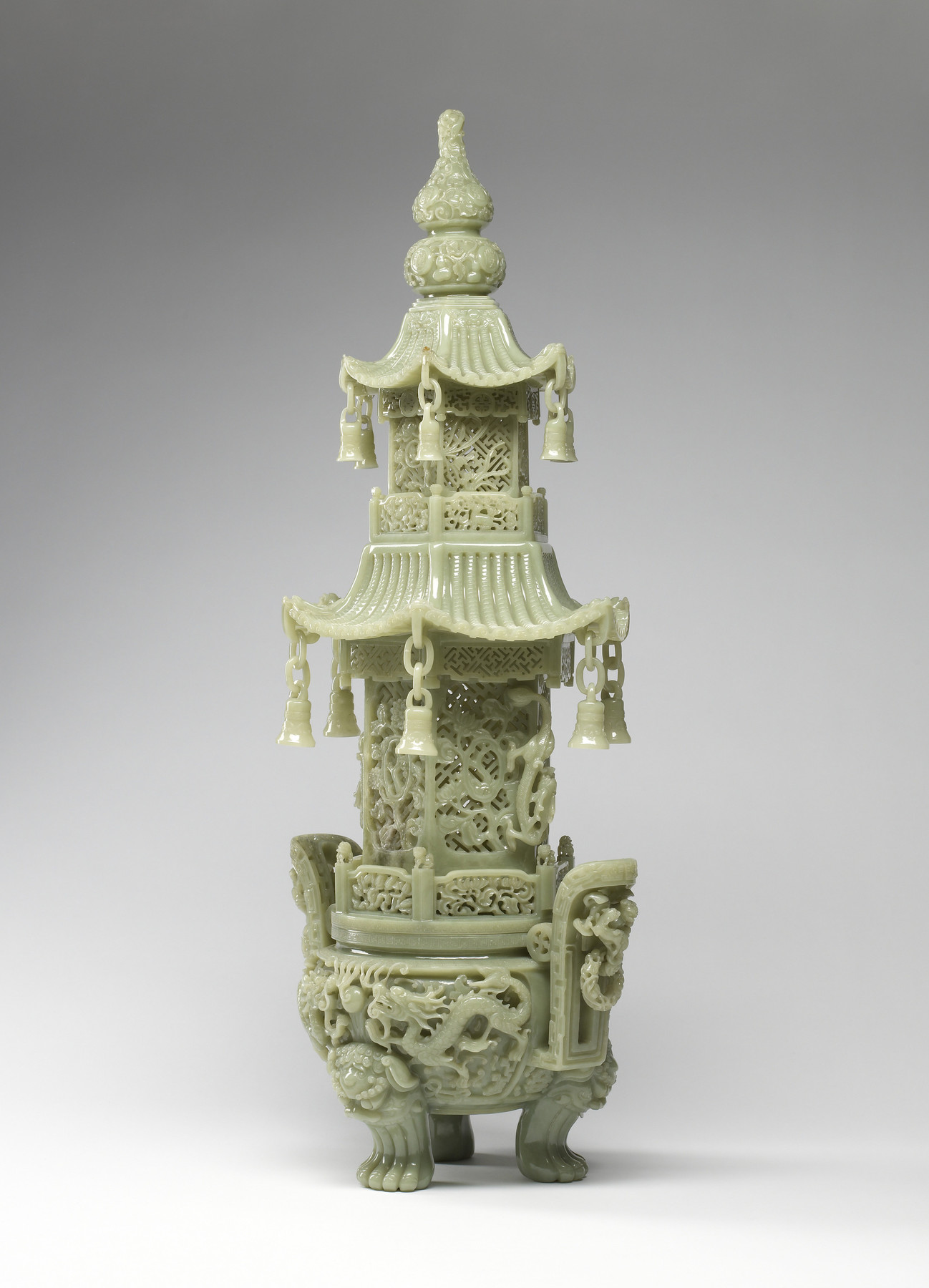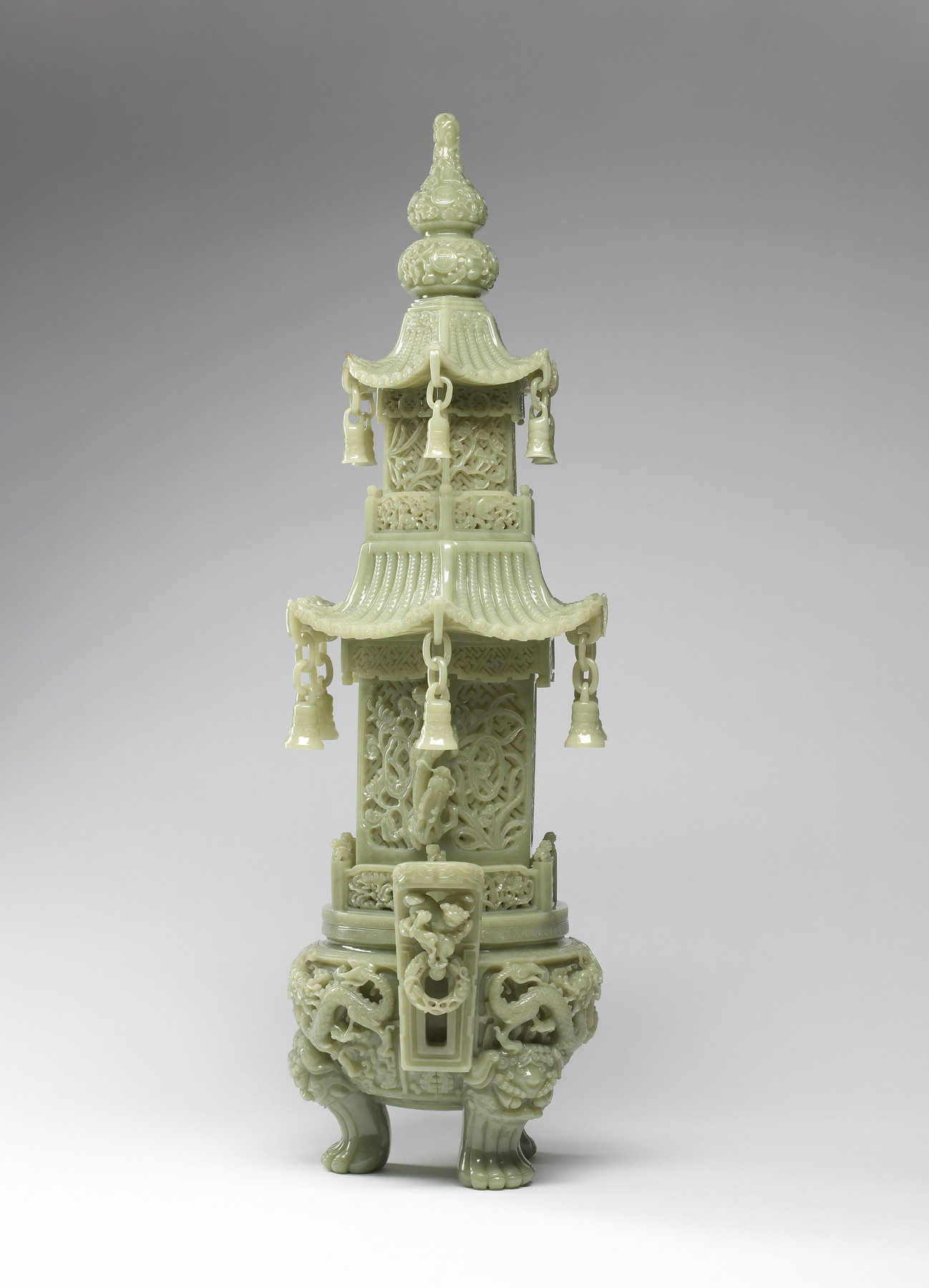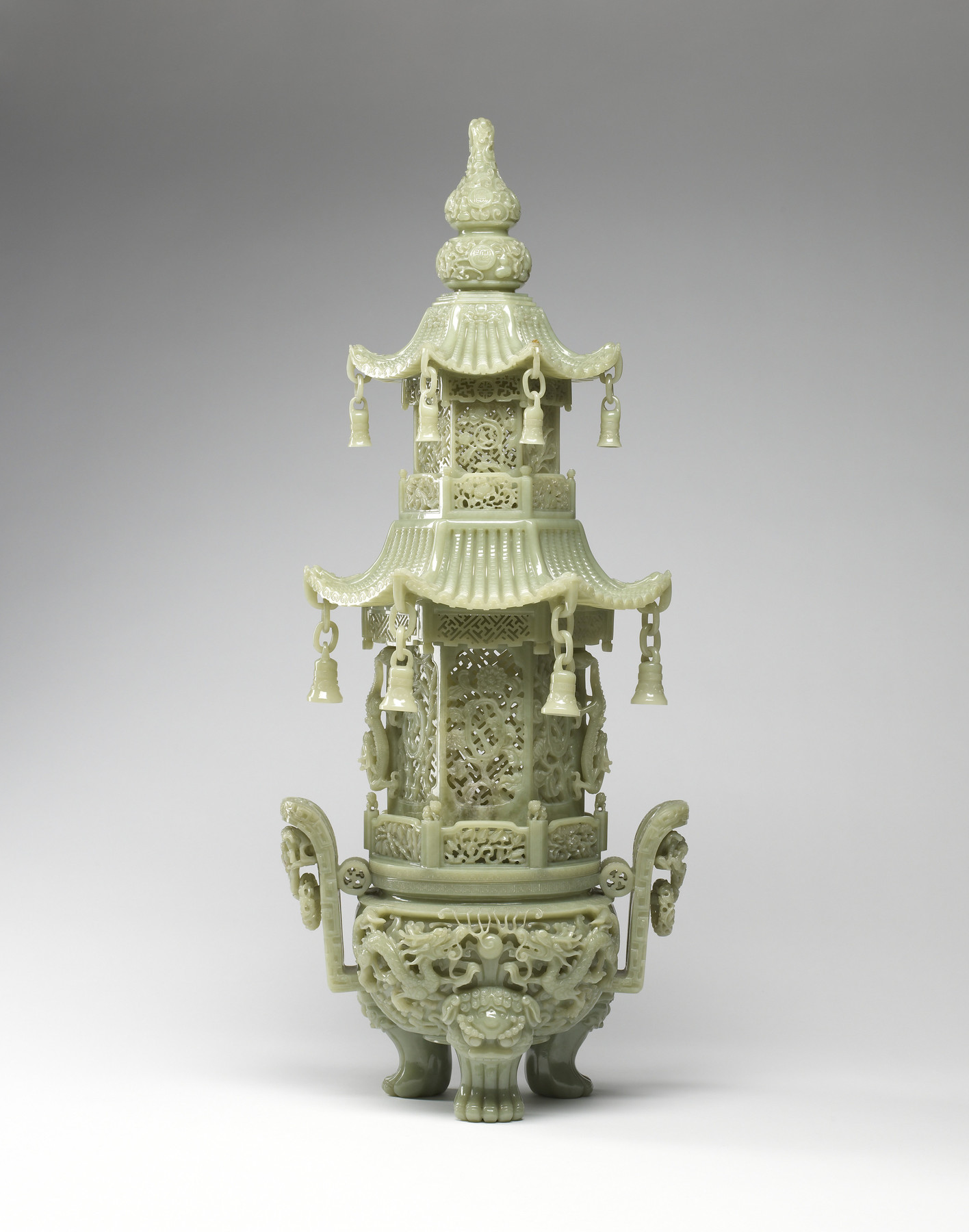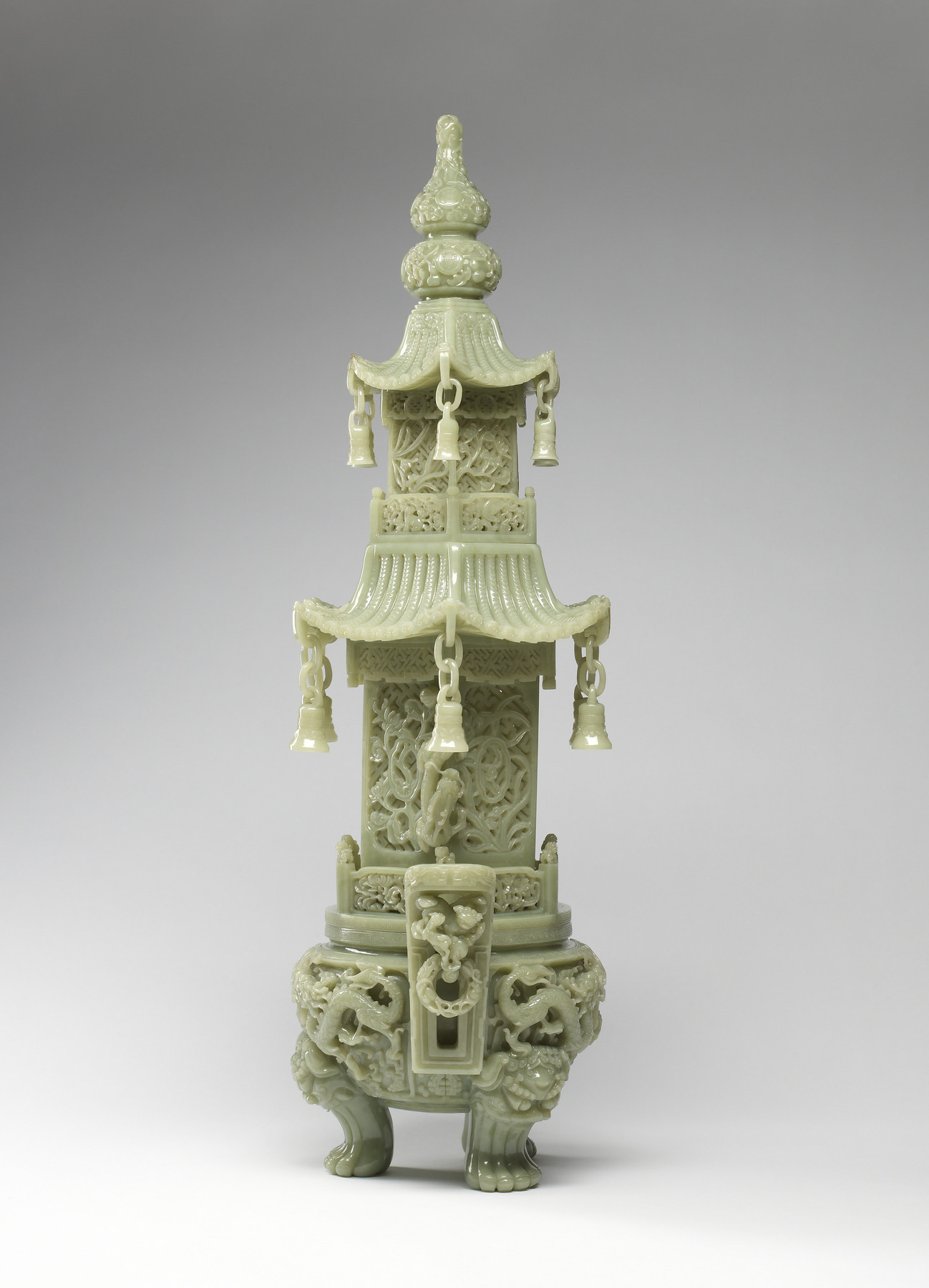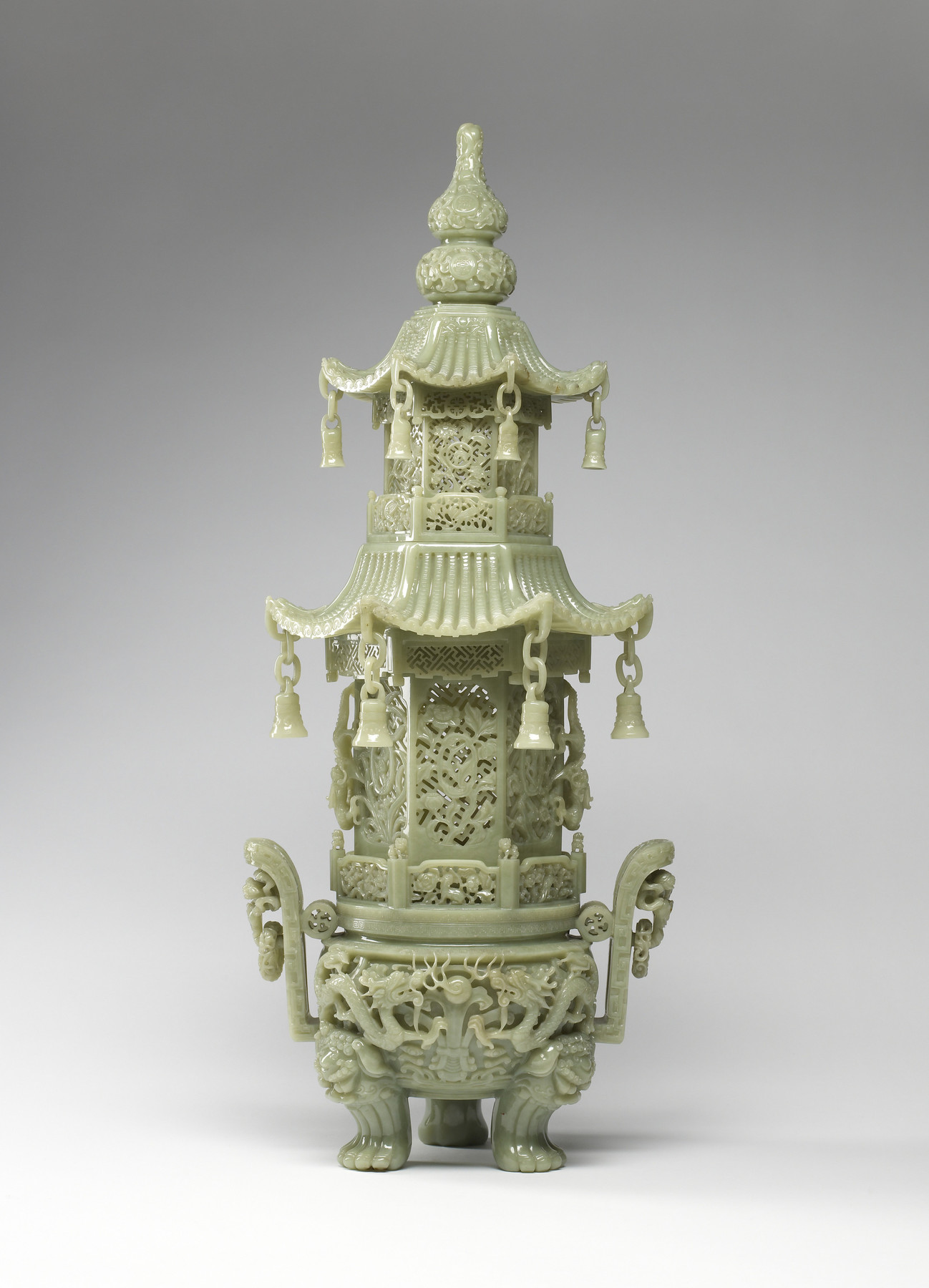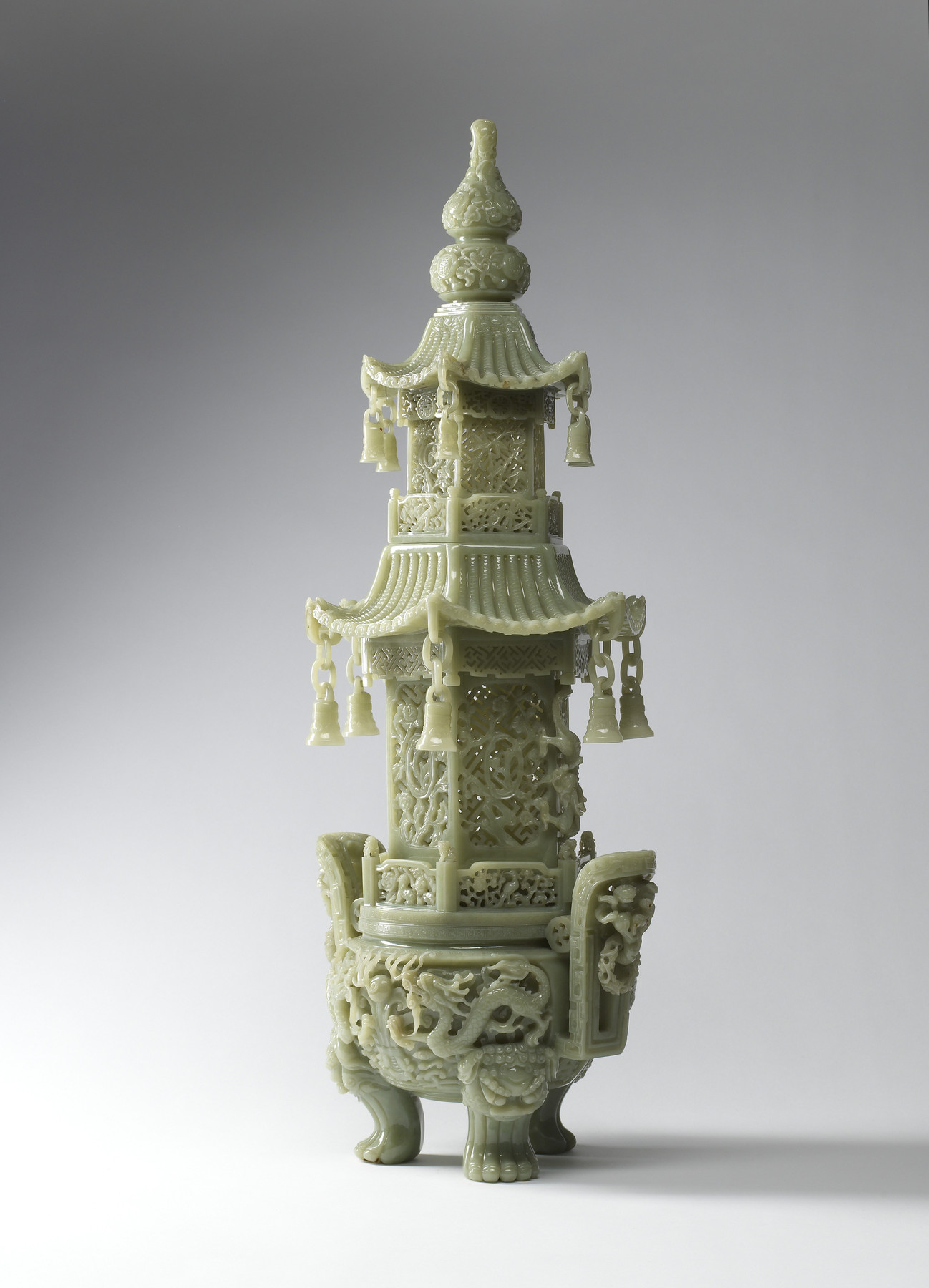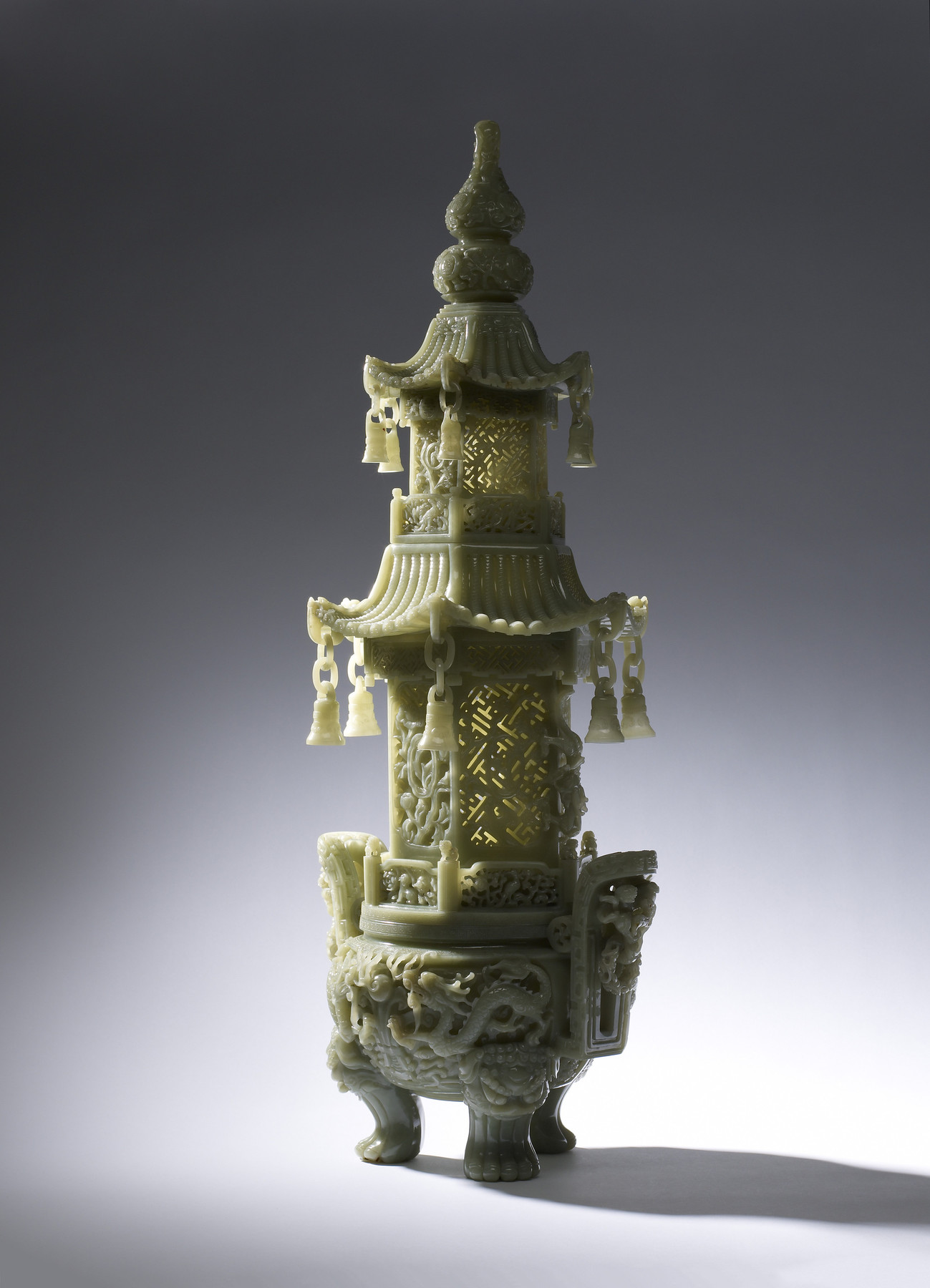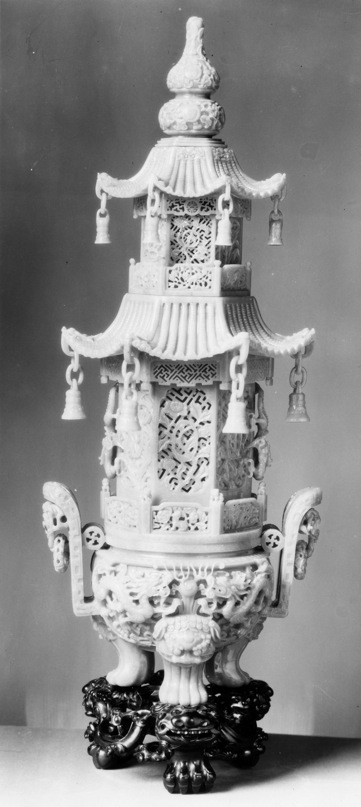Incense Burner in the Form of a Pagoda
(China )
This incense burner is in the form of a pagoda. Evolved from the Indian stupa structure, pagodas are tall multi-roofed buildings that originally housed relics of the Buddha or another venerated person. This jade model of one, however, is made to burn incense. Buddhists regard incense as “divine scent,” and its aroma is meant to invoke the presence of Buddhist divinities. Burning incense in a burner such as this example also works to sanctify the space in a temple or home and encourage mindfulness and awareness.
Provenance
Provenance (from the French provenir, 'to come from/forth') is the chronology of the ownership, custody, or location of a historical object. Learn more about provenance at the Walters.
Henry Walters, Baltimore [date and mode of acquisition unknown]; Walters Art Museum, 1931, by bequest.
Geographies
China (Place of Origin)
Measurements
H: 28 15/16 × W: 12 × D: 8 5/8 in. (73.5 × 30.5 × 21.9 cm)
Credit Line
Acquired by Henry Walters
Accession Number
In libraries, galleries, museums, and archives, an accession number is a unique identifier assigned to each object in the collection.
In libraries, galleries, museums, and archives, an accession number is a unique identifier assigned to each object in the collection.
42.239

